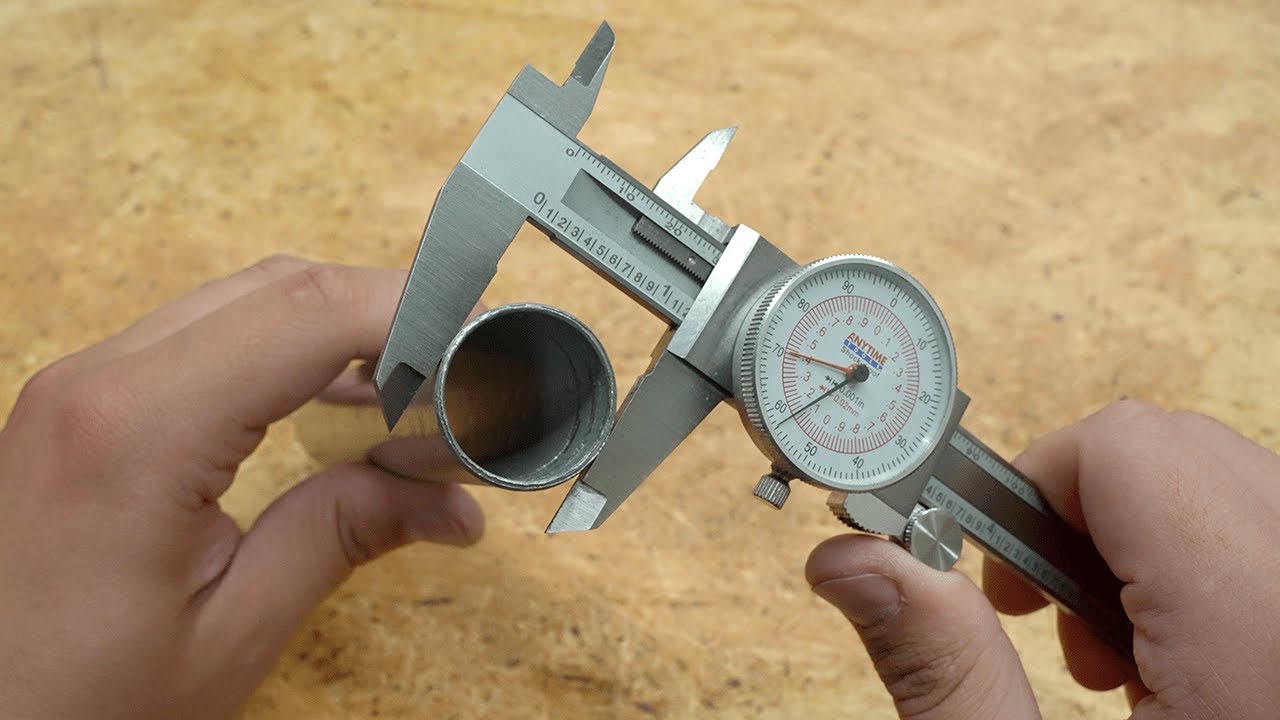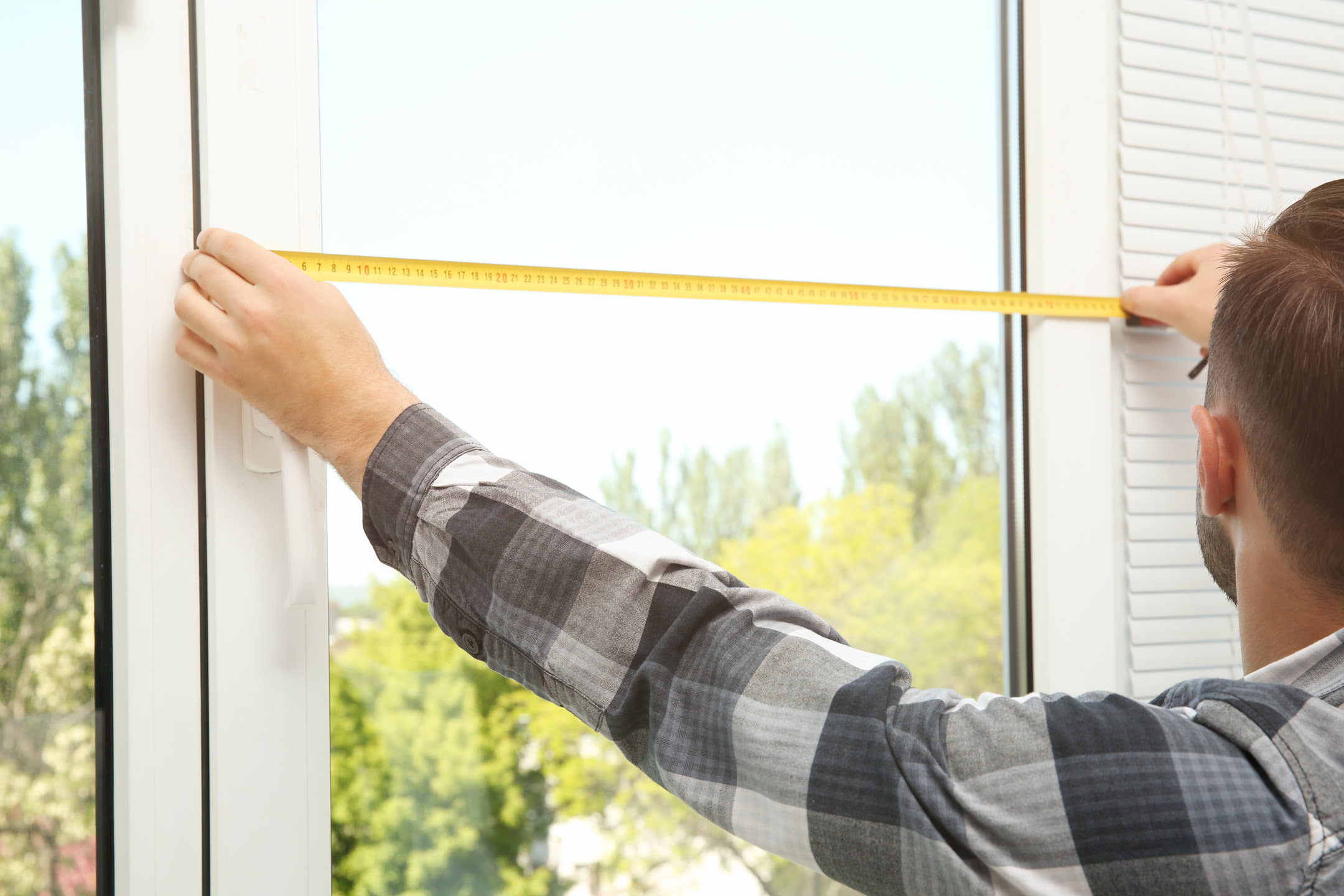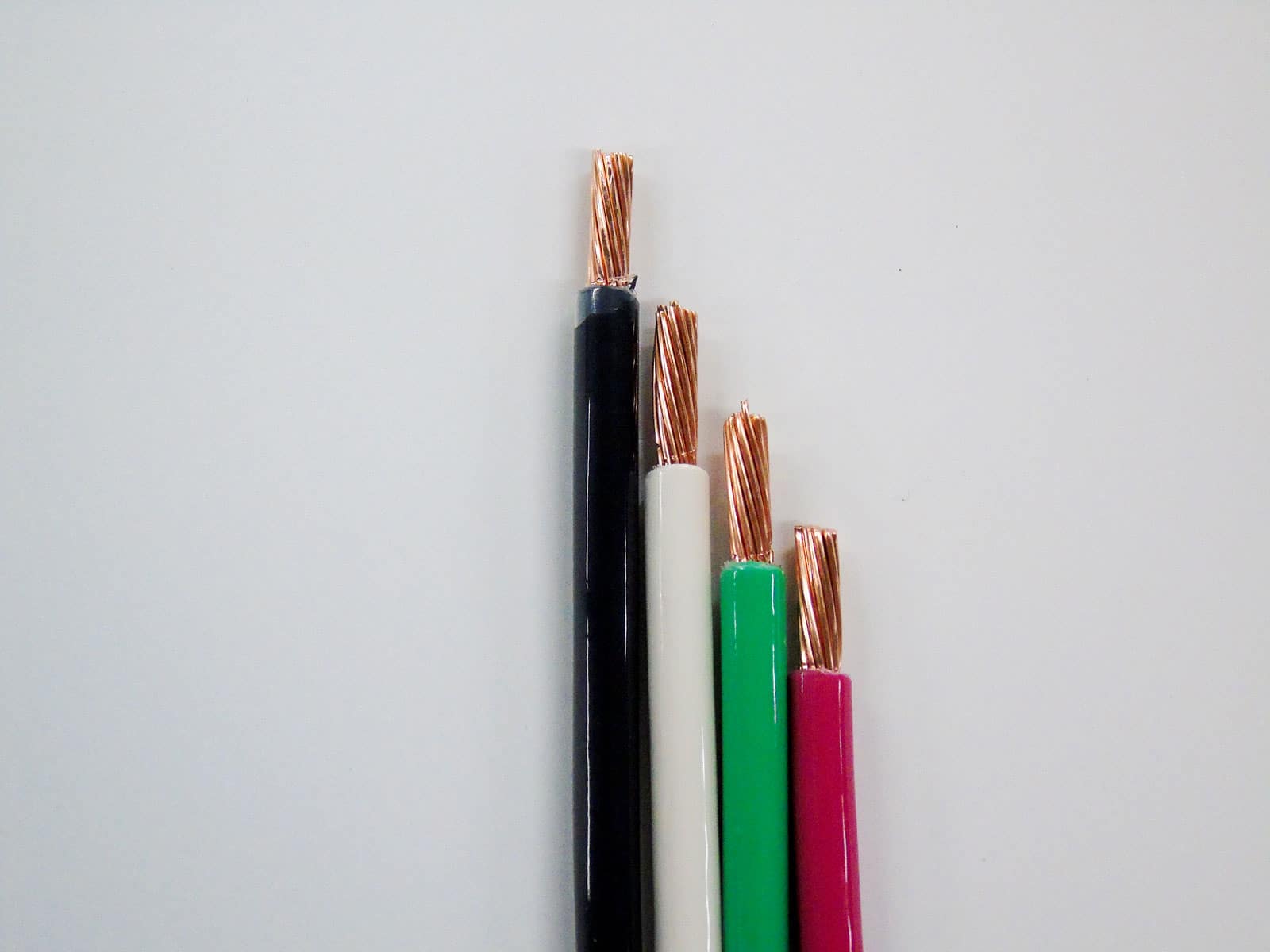

Articles
How To Measure Conduit Size
Modified: March 1, 2024
Learn how to measure conduit size with this helpful article. Find out the best methods and tools to ensure accurate measurements.
(Many of the links in this article redirect to a specific reviewed product. Your purchase of these products through affiliate links helps to generate commission for Storables.com, at no extra cost. Learn more)
Introduction
When it comes to electrical installations, one important aspect to consider is choosing the appropriate conduit size. The conduit serves as a protective casing for electrical wires and cables, ensuring they are safe from damage and maintaining compliance with electrical codes and regulations.
But how do you accurately measure conduit size? Whether you are working on a residential, commercial, or industrial project, it is crucial to determine the correct conduit size to ensure smooth wire pulling and prevent any potential issues down the line.
In this article, we will explore various methods for measuring conduit size, allowing you to choose the most suitable approach for your specific needs. From using a tape measure to utilizing a conduit fill chart or even measuring with a conduit fitting, we will cover everything you need to know to get the job done effectively and efficiently.
So, let’s dive in and discover the different methods for measuring conduit size!
Key Takeaways:
- Accurately measuring conduit size is crucial for safe and compliant electrical installations. Utilize methods such as tape measuring, conduit fill charts, and fitting measurements to ensure optimal wire capacity and system functionality.
- Understanding conduit size and employing the right measurement methods is essential for a successful electrical project. Whether using a tape measure, fill chart, or fitting, precision in conduit sizing ensures efficient wire pulling and long-term safety.
Read more: How To Determine Conduit Size
Understanding Conduit Size
Before we delve into the methods of measuring conduit size, it’s crucial to have a good understanding of what exactly conduit size refers to. Conduit size refers to the internal diameter of the conduit, which determines the maximum number of wires or cables that can be safely installed within it.
Conduit sizes are typically designated in trade sizes, which may seem puzzling at first. Common trade sizes range from 1/2 inch to 6 inches, with each increment representing a specific internal diameter. It’s important to note that trade sizes do not directly correlate to the actual physical measurements of the conduit. Instead, they are standardized designations that help electricians select the appropriate conduit for their installation needs.
The choice of conduit size depends on various factors, such as the number and type of wires or cables being installed, the length of the conduit run, and the specific electrical codes and regulations governing the installation. It’s essential to consult the National Electrical Code (NEC) or local electrical standards to determine the appropriate conduit size for your specific application.
By understanding the significance of conduit size and the factors that influence its selection, you can ensure a safe and efficient electrical installation that complies with industry standards.
Methods to Measure Conduit Size
When it comes to measuring conduit size, there are several methods you can use. Each method has its own advantages and is suited for different scenarios. Let’s explore the three primary methods of measuring conduit size:
- Measuring Conduit Size Using a Tape Measure: The most straightforward method is to use a tape measure to determine the external diameter of the conduit. This method is useful when you need to measure the conduit’s physical dimensions to find the appropriate trade size. Simply wrap the tape measure around the perimeter of the conduit and record the measurement. Remember to subtract the wall thickness of the conduit to get the internal diameter.
- Measuring Conduit Size Using a Conduit Fill Chart: Another common method is to consult a conduit fill chart. These charts provide information on the maximum number and size of wires or cables that can be safely installed in a specific conduit size. Simply match the conduit size with the corresponding wire gauge and type to determine the maximum fill capacity. Conduit fill charts are widely available online or can be found in electrical code books or manufacturer specifications.
- Measuring Conduit Size Using a Conduit Fitting: In some cases, you can determine the conduit size by using a fitting that matches the opening of the conduit. Insert the fitting into the conduit until it fits snugly, and then identify the fitting size as the conduit size. This method is particularly useful when the conduit is already installed, and you need to determine its size for replacement or modification purposes.
Depending on your specific situation and the availability of tools and resources, choose the method that works best for you to accurately determine the conduit size.
Measuring Conduit Size Using a Tape Measure
One of the simplest methods to measure conduit size is by using a tape measure. This method allows you to determine the external diameter of the conduit, which can help you identify the appropriate trade size. Follow these steps to measure conduit size using a tape measure:
- Gather the necessary tools: You will need a tape measure, preferably a flexible one, for accurate measurements.
- Prepare the conduit: Ensure the conduit is clean and free from any obstructions or debris.
- Measure the exterior diameter: Wrap the tape measure around the largest section of the conduit, perpendicular to its length. Make sure the tape measure is taut and aligned evenly around the circumference.
- Record the measurement: Take note of the measurement displayed on the tape measure.
- Calculate the internal diameter: To determine the internal diameter, subtract the wall thickness of the conduit from the measurement recorded in the previous step. The wall thickness can typically be found in conduit specifications or manufacturer documentation.
It’s important to note that measuring the external diameter of the conduit may not provide an exact match to standard trade sizes. In some cases, the measured diameter might fall between two trade sizes. In such situations, round up to the nearest trade size that can accommodate the size and number of wires or cables you plan to install.
Using a tape measure is a quick and easy method to get a rough estimate of the conduit size. However, for precise measurements and determining the maximum wire capacity within the conduit, it’s recommended to consult a conduit fill chart or use a conduit fitting.
When measuring conduit size, use a conduit measuring tool or a caliper to accurately determine the outer diameter of the conduit. This will ensure you select the correct fittings and accessories for your project.
Measuring Conduit Size Using a Conduit Fill Chart
A conduit fill chart is a valuable tool for accurately determining the maximum number and size of wires or cables that can be safely installed within a conduit. It takes into account factors such as conduit size, wire gauge, and wire type to calculate the maximum fill capacity. Using a conduit fill chart is essential to ensure compliance with electrical codes and regulations. Follow these steps to measure conduit size using a conduit fill chart:
- Acquire a conduit fill chart: Conduit fill charts can be found in electrical code books, manufacturer specifications, or online resources. Choose a reliable and up-to-date chart that matches the type and size of conduit you are working with.
- Identify the conduit size: Locate the section of the conduit fill chart that corresponds to the trade size or internal diameter of the conduit.
- Select the wire gauge and type: Determine the size and type (e.g., THHN, THWN) of the wires or cables that will be installed in the conduit.
- Check the maximum fill capacity: Find the intersection of the conduit size and the wire gauge/type in the chart. The chart will provide information on the maximum number of wires or cables that can be safely installed within the conduit.
It’s important to note that the conduit fill chart considers factors such as wire bundling, wire insulation, and ambient temperature, which can impact the fill capacity. Therefore, it’s crucial to follow the guidelines provided in the chart for a safe and efficient installation.
By using a conduit fill chart, you can ensure that the chosen conduit size can accommodate the required number and size of wires or cables, minimizing the risk of overcrowding and potential overheating issues.
Read more: How To Cut Blinds To Size
Measuring Conduit Size Using a Conduit Fitting
In some cases, you may need to measure the size of an already installed conduit without any available documentation or labeling. Measuring conduit size using a conduit fitting can be a practical solution. Here’s how you can do it:
- Choose a fitting: Select a conduit fitting that matches the opening of the conduit you want to measure. It should fit snugly inside the conduit without being too loose or too tight.
- Insert the fitting: Insert the chosen fitting into the conduit until it reaches a point where it fits comfortably.
- Check the fitting size: Once the fitting is in place, examine its size or measurement on the exterior portion. This measurement represents the size of the conduit that the fitting fits into.
- Identify the conduit size: Compare the fitting size with industry standards or consult a conduit size conversion chart to determine the trade size or internal diameter of the conduit.
Measuring conduit size using a conduit fitting can be particularly useful when dealing with existing installations, renovations, or repairs where labels or markings may have faded or been removed. It allows you to determine the size accurately and select the appropriate conduit for modifications or replacements.
However, it’s important to note that this method is dependent on having a suitable fitting available that matches the conduit opening. If a fitting cannot be inserted or does not fit properly, it is recommended to explore alternative methods of measuring conduit size, such as using a tape measure or referring to a conduit fill chart.
Conclusion
Choosing the correct conduit size is crucial for any electrical installation to ensure the safety and efficiency of the wiring system. Fortunately, there are several methods available to accurately measure conduit size, depending on your specific needs and resources.
Using a tape measure allows you to measure the exterior diameter of the conduit, providing a rough estimate of the conduit size. However, for precise measurements and to determine the maximum wire capacity, consulting a conduit fill chart is recommended. This chart takes into account factors such as conduit size, wire gauge, and wire type to calculate the maximum fill capacity.
In situations where the conduit is already installed and its size needs to be determined, measuring with a conduit fitting can be an effective solution. Inserting a fitting into the conduit and examining its size can help identify the appropriate trade size or internal diameter.
By understanding the importance of conduit size and utilizing the appropriate measuring methods, you can ensure a compliant and efficient electrical installation. It’s essential to consult the National Electrical Code (NEC) or local electrical standards to determine the specific requirements for conduit sizing in your area.
Remember, accuracy in measuring conduit size is crucial for optimal wire pulling, avoiding overcrowding, and preventing potential safety hazards. Take the time to measure the conduit size accurately to ensure a successful electrical installation.
Whichever method you choose, whether it’s using a tape measure, conduit fill chart, or conduit fitting, make sure to record the measurements accurately and double-check for accuracy. Working with the right conduit size will provide peace of mind and ensure the longevity and functionality of your electrical system.
So, the next time you embark on an electrical project, remember to measure your conduit size correctly and enjoy a smooth and hassle-free installation process!
Frequently Asked Questions about How To Measure Conduit Size
Was this page helpful?
At Storables.com, we guarantee accurate and reliable information. Our content, validated by Expert Board Contributors, is crafted following stringent Editorial Policies. We're committed to providing you with well-researched, expert-backed insights for all your informational needs.















0 thoughts on “How To Measure Conduit Size”